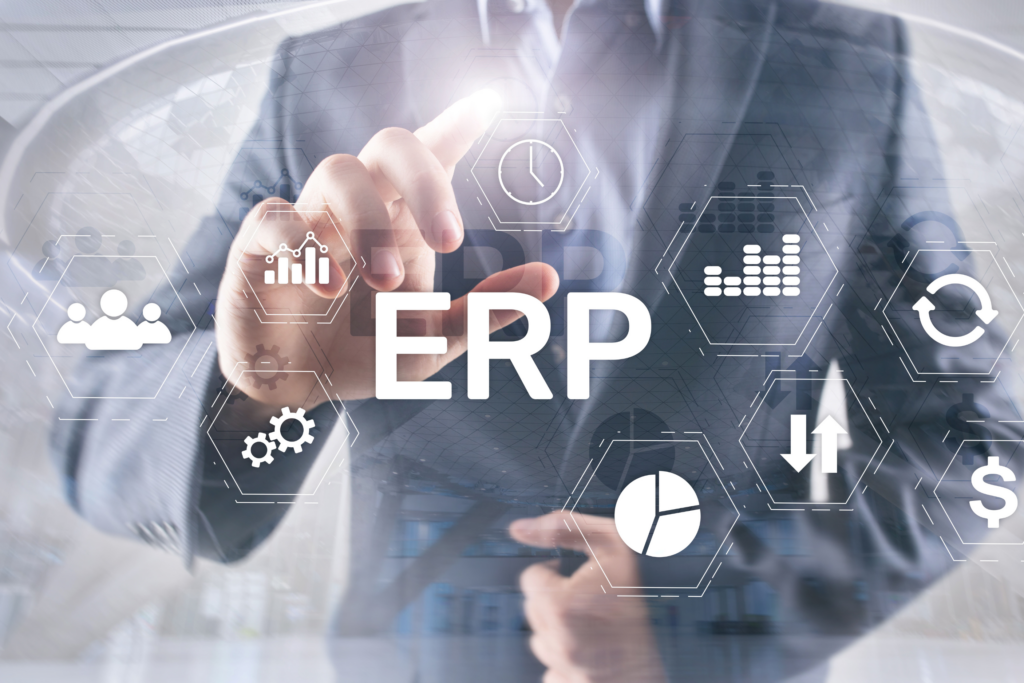ERP isn’t just a systems project.
It’s a reckoning.
It forces you to face uncomfortable truths about your products, processes, customers—and how your business really operates. Which is exactly why so many ERP implementations go wrong, cost millions, and leave businesses with shiny systems no one uses properly.
Most ERP failures don’t come from bad software.
They come from bad assumptions.
ERP Failure: The Expensive, Avoidable Reality
Let’s start with the uncomfortable bit:
Most ERP projects either overspend, underdeliver, or both.
A 2023 survey by Panorama Consulting found that over 50% of ERP projects experience cost overruns, and more than a third are deemed “failures” by the organisations implementing them. ERP implementations are among the most critical and expensive initiatives a business can undertake, often ranging from hundreds of thousands to several million pounds, depending on the organisation’s size and complexity.
That’s not a technology problem—it’s a leadership one.
The common traps:
- No clear business outcome beyond “we need a new system”
- ERP treated like an IT upgrade instead of a business transformation
- Process mapping done after the system is already chosen
- Key decisions made in isolation (typically by finance or ops)
- Internal resistance from teams clinging to manual workarounds
- Poor change management and almost zero engagement planning
- In short: a failure to ask the right questions before anyone touches a keyboard.
The Hidden Landmine: Your Products and Customers
One of the biggest truths ERP projects expose is this:
80% of your revenue probably comes from 20% (or fewer) of your products.
The rest?
- Unprofitable custom offers kept alive to keep a single customer happy
- Products with duplicated features, identical outcomes, or no clear commercial logic
- Entire categories that require manual intervention to deliver
An ERP system doesn’t magically fix this. In fact, it breaks under the weight of it—unless you rationalise your portfolio and make commercial decisions about what stays, what goes, and what gets migrated.
And here’s the kicker:
Most businesses can’t even agree on what products exist.
No taxonomy, no single catalogue, just fragments of spreadsheets and “ask Dave in sales.”
ERP will force you to face this. The only question is: will you fix it, or paper over it again and hope for the best?
Watch Out for This Classic Trap: The Over-Servicing Consultancy
One more thing no one tells you before you start:
Some consultancies will sell you the world—and then flood your business with teams who create more confusion than clarity.
Here’s how it works:
- A “strategy lead,” a “delivery partner,” a “change architect,” and a “process lead” all appear, each billing independently
- Discovery work gets repeated in silos, progress slows, and the business is left wondering what anyone is actually delivering
- You’re paying premium rates to coordinate people who were brought in to help you coordinate things
If your implementation partner isn’t simplifying complexity, challenging assumptions, and aligning stakeholders—they’re probably just padding the invoice.
What Good ERP Looks Like
Done right, ERP enables clarity, scale, and commercial control. But to get there, your project needs:
- Business-led goals, not just system specs
- Ruthless process and product cleanup before configuration begins
- Portfolio analysis to cut, consolidate, or migrate product complexity
- A shared product catalogue and taxonomy recognised across the business
- Change management baked in from day one—not after go-live
- Partners who don’t just nod along—they challenge you, pressure-test plans, and protect commercial outcomes
- A platform choice aligned with your actual needs—whether that’s SAP, Oracle, Microsoft Dynamics, NetSuite, Salesforce, or another provider.
Choosing the Right ERP Platform: A Quick Snapshot
SAP is powerful for large, complex global operations—but with complexity comes high cost and implementation time. It demands robust process clarity going in.
Oracle offers strong scalability and deep financial functionality but often suits organisations with significant internal capability to manage its sophistication.
Microsoft Dynamics 365 is flexible and integrates well with Microsoft environments, making it a strong mid-market choice—but it still requires heavy configuration to match business processes.
NetSuite excels in high-growth, cloud-first businesses, particularly in services and software sectors. It’s quick to deploy but less configurable for heavily customised models.
Salesforce, traditionally CRM-first, now competes in the ERP space with its platform-based approach. It’s strong in customer-facing workflows and modular scalability but can become expensive with customisation and bolt-ons.
No system solves structural complexity. It just makes it harder to ignore.
How RJP Group Delivers Transformation That Works
At RJP Group, we help organisations get ERP right—because we focus on what really matters:
- Challenging assumptions at the start, not the end
- Aligning leadership, operations, and front-line delivery
- Supporting product rationalisation and customer simplification as part of the plan
- Keeping implementation teams lean, focused, and accountable
- Never delivering for the sake of activity—only for results
The Bottom Line
ERP won’t fix broken products or outdated processes.
It will expose them.
Handled properly, that’s an opportunity to build something cleaner, simpler, and scalable.
Handled poorly, it’s a multi-million pound systems distraction that creates more mess than it solves.
If you’re thinking about ERP, start by asking the tough questions.
We’ll help you get the right answers—and deliver transformation that sticks.
📩 Let’s talk. RJP Group supports ERP-led business transformation with commercial clarity, cross-functional delivery, and no theatre.
